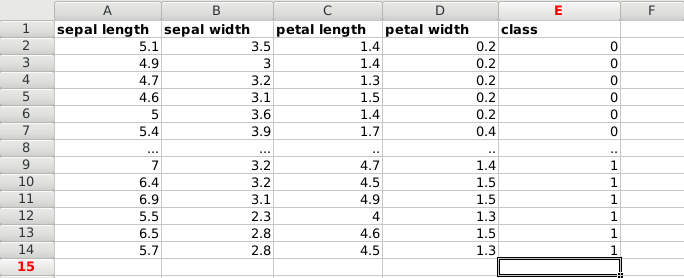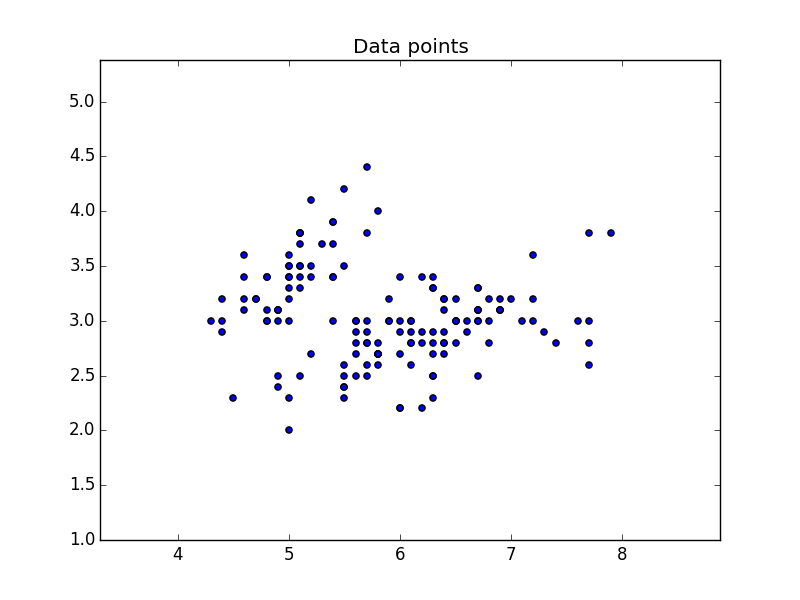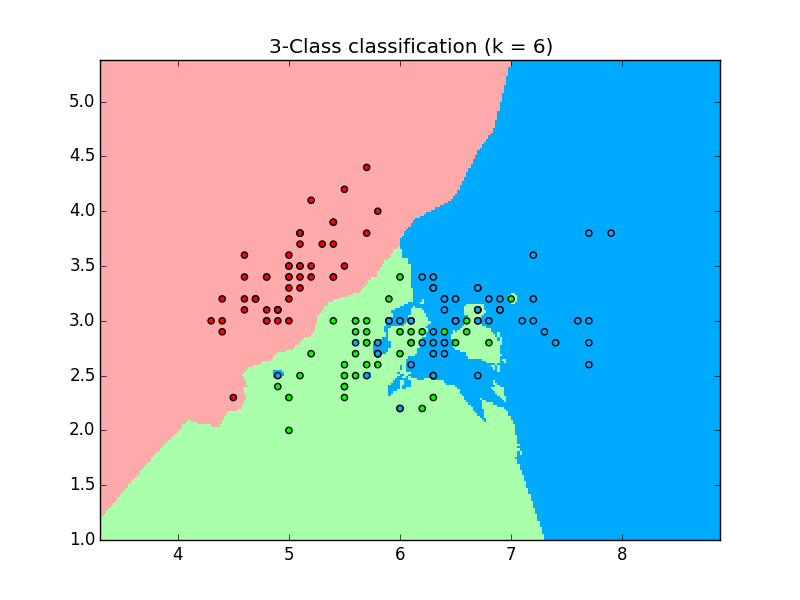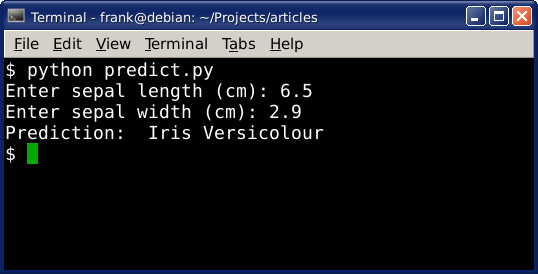Category: machine learning
kneighborsclassifier
Computers can automatically classify data using the k-nearest-neighbor algorithm.
For instance: given the sepal length and width, a computer program can determine if the flower is an Iris Setosa, Iris Versicolour or another type of flower.
Related coursesDataset
We start with data, in this case a dataset of plants.
Each plant has unique features: sepal length, sepal width, petal length and petal width. The measurements of different plans can be taken and saved into a spreadsheet.
The type of plant (species) is also saved, which is either of these classes:
- Iris Setosa (0)
- Iris Versicolour (1)
- Iris Virginica (2)
Put it all together, and we have a dataset:
We load the data. This is a famous dataset, it’s included in the module. Otherwise you can load a dataset using python pandas.
|
X contains the first two features, being the rows sepal length and sepal width. The Y list contains the classes for the features.
Plot data
We will use the two features of X to create a plot. Where we use X[:,0] on one axis and X[:,1] on the other.
|
Classify with k-nearest-neighbor
We can classify the data using the kNN algorithm. We create and fit the data using:
|
And predict the class using
|
This gives us the following code:
|
which outputs the plot using the 3 classes:
Prediction
We can use this data to make predictions. Given the position on the plot (which is determined by the features), it’s assigned a class. We can put a new data on the plot and predict which class it belongs to.
The code below will make prediction based on the input given by the user:
|




